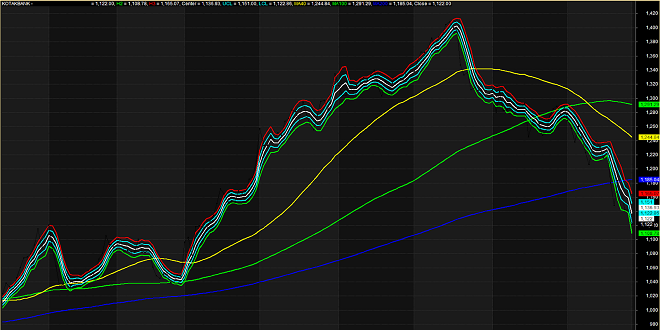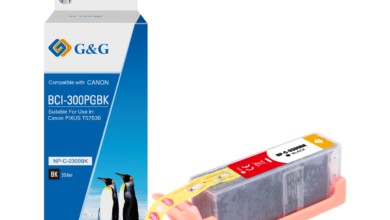Using the Moving Average Channel

The moving average channel (MAC) is a method I developed and refined over 20 years ago. It is very useful and effective in stocks and futures. It offers:
A specific method for determining the initial stop-loss for trade once there has been a setup and a trigger. The exact procedure for different position sizes.
How and when to trail stop losses. A general idea of whether the move will be large or small.
A specific method for trailing a stop-loss when trades make explosive moves in your favor.
A conservative, aggressive, and professional follow-up approach depends on your account size and degree of risk tolerance.
The method
The MAC is based on moving averages of highs and lows, as opposed to the use of traditional moving average crossover systems, which use the moving average (MA) of closing prices The MAC uses two MAs, one of the high price and one of the low prices. In so doing, the MAC is quite different than traditional moving averages and it is not subject to many of the same limitations that inhibit the performance results with traditional moving averages.
Typical results with MA-based systems that use closing prices are 85 JWPR004-10 JWPR004-Bernstein February 21 Char Count= 0 86 30 DAYS TO MARKET MASTERY very poor, usually in the range of 30 percent to 45 percent accuracy. The MAC improves the odds considerably because it is a total method that uses my STF (setup, trigger, and follow-through) approach. Here are the rules of application for the MAC.
Calculate an eight-period simple MA of the low price for each bar (i.e., daily or weekly, or intraday). Calculate a 10-period simple MA of the high price for each bar (i.e., daily or weekly, or intraday). A buy setup occurs when one complete bar occurs above the moving average of the high (MAH). A BUY trigger occurs when a second consecutive complete bar occurs above the MAH.
A SELL setup occurs when one complete bar occurs below the moving average of the low (MAL). A SELL trigger occurs when a second consecutive complete bar occurs below the MAL.
Very important! The price bars must be completely above or below the MA line to be valid. Please note this carefully—the entire bar must be outside the channel.
Note that these are the basic rules. The next lesson will go into considerably greater detail regarding the many effective uses of the MAC.
It looks easy
The two examples I cited make the MAC seem easy, but there is a lot more to the MAC than what I have shown you to this point. Here are a few more very important aspects of the MAC
When the MAC has triggered a buy, the MA of the low serves as a support in the new uptrend. When the MAC has triggered a sell, the MA of the high serves as resistance in the new downtrend. The more consecutive bars that comprise a new signal, the more significant the new trend is likely to be.
Practice, practice, practice
In this lesson, you learned about the MAC method, which consists of two MAs. The MAC uses a 10-period MA for the highs and an eight-period MA for the lows. The MAC triggers for a buy and a sell were discussed. The MAC also provides a way of determining the support, resistance, and strength of a trend.
Last word
Congratulations! You have now completed the first lesson in your MAC method. We will look at my Moving Average Channel (MAC) to see more specifically how it can work as a trend indicator, timing indicator, and support/resistance swing trading method.
The tattoo culture has experienced a significant rise in popularity over the years, becoming more mainstream and widely accepted. Tattoos have a long and rich history, serving as a form of self-expression and a symbol of cultural significance. From ancient civilizations to modern times, tattoos have held various meanings and purposes.





